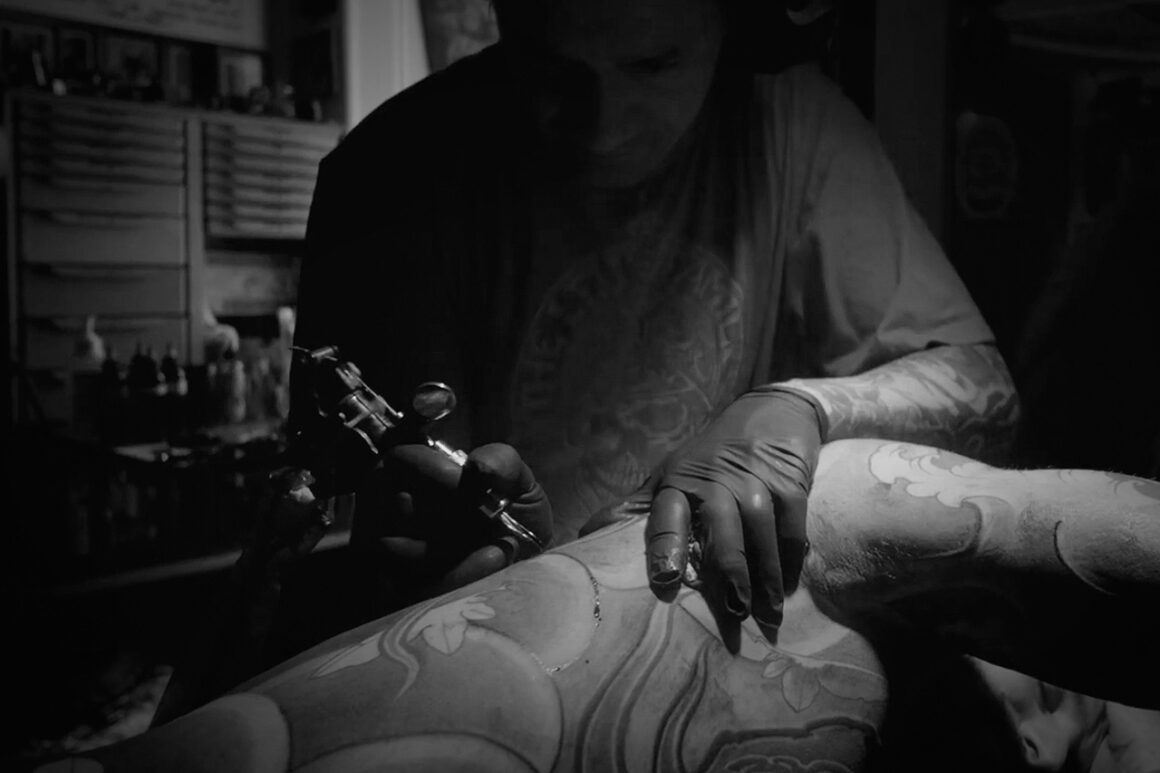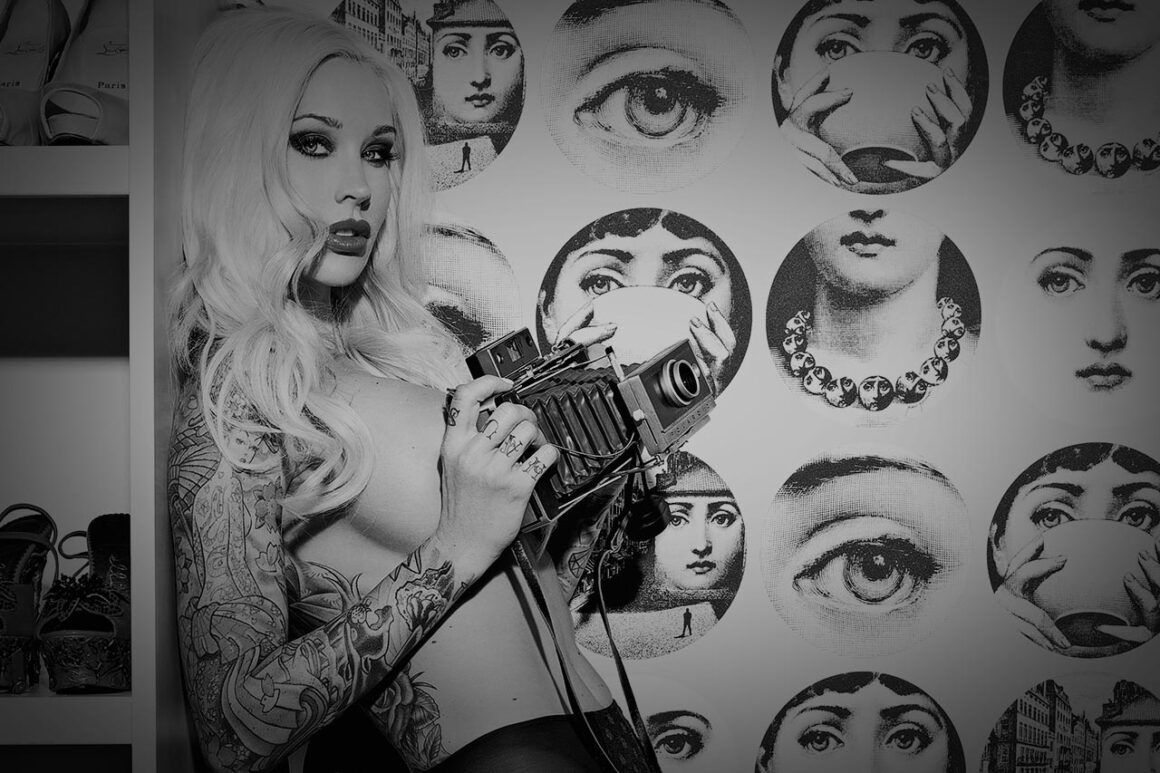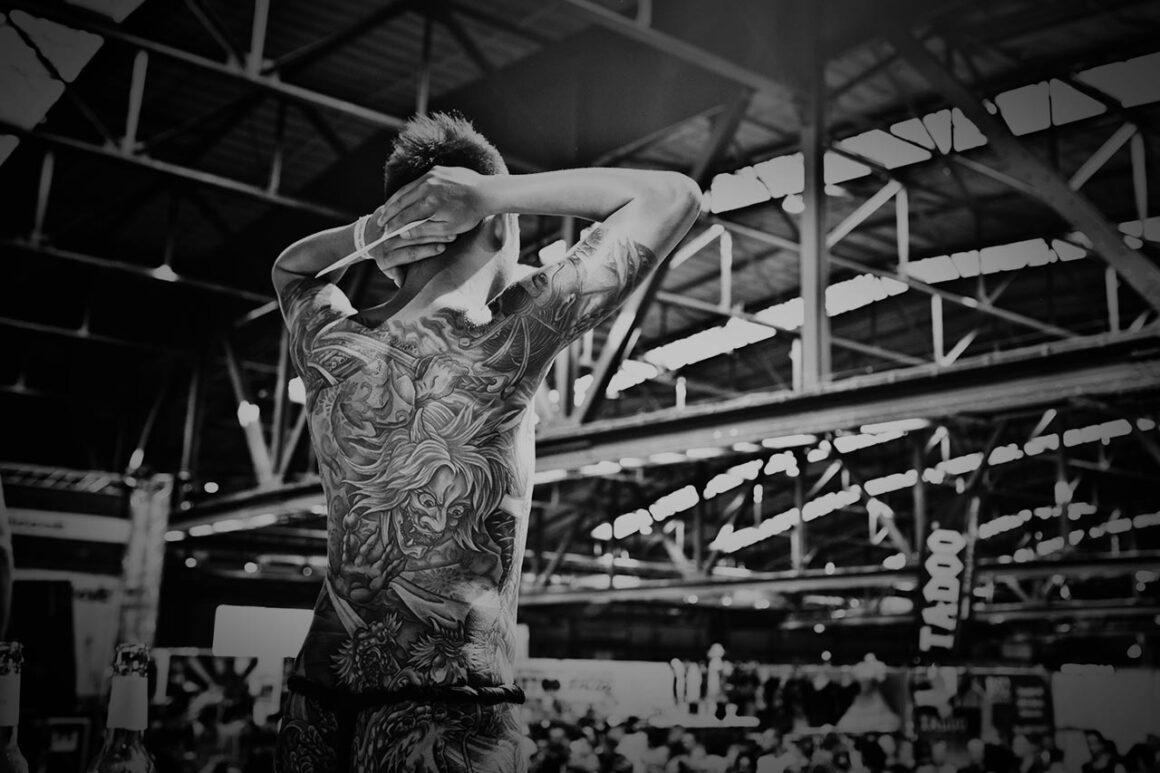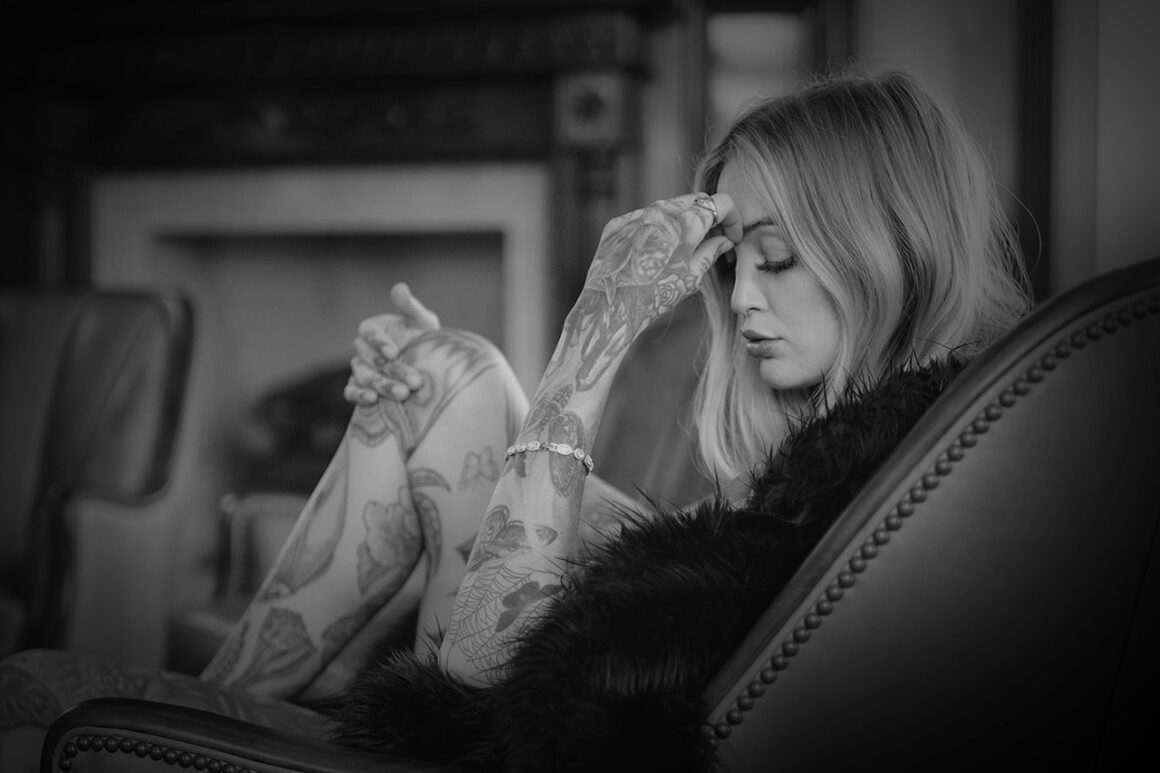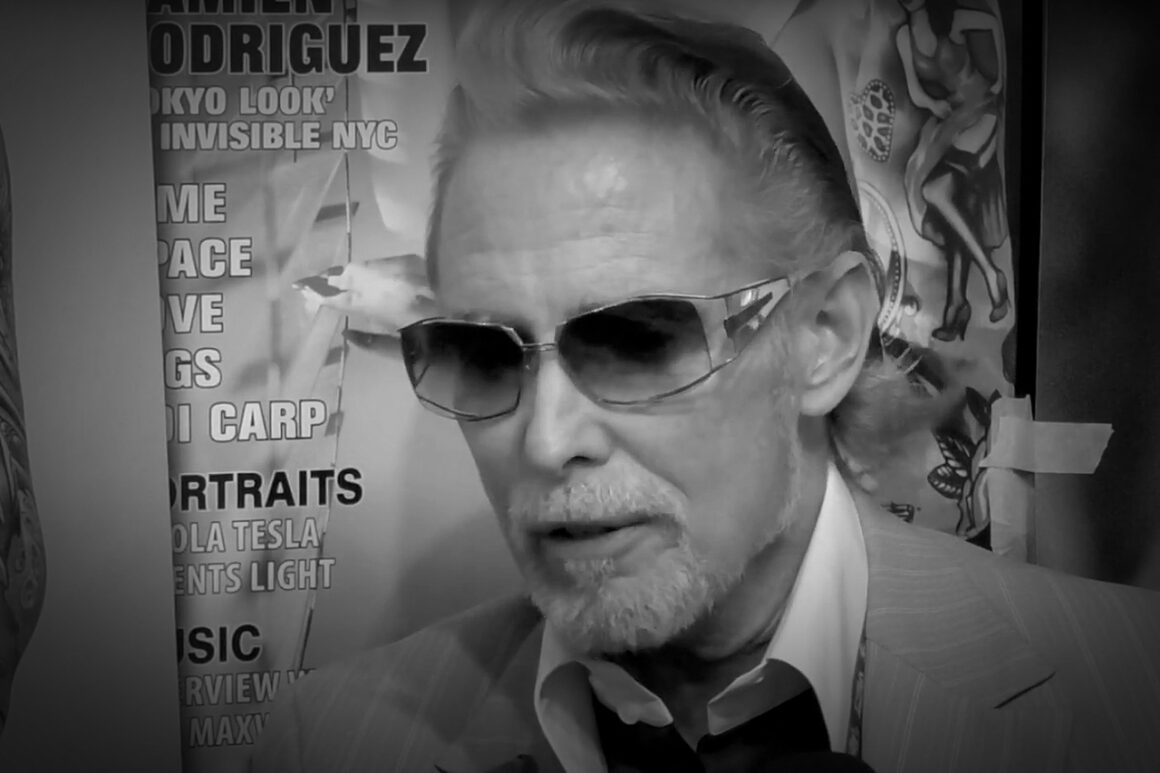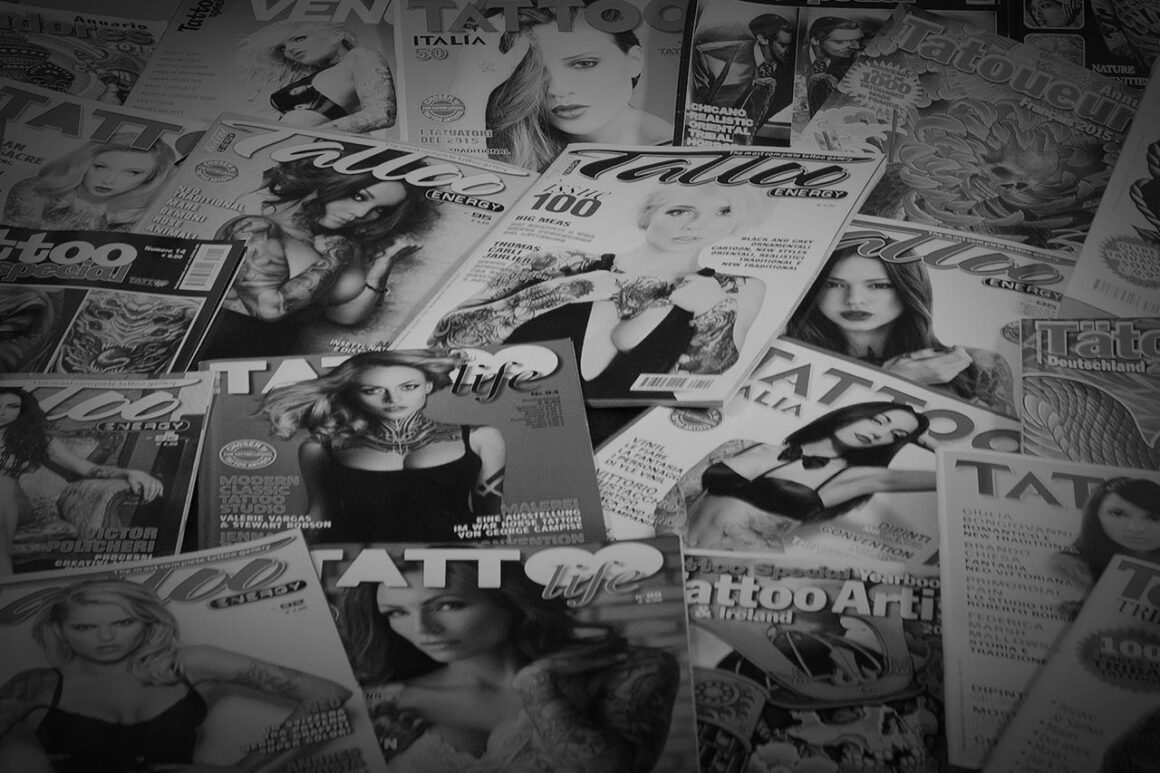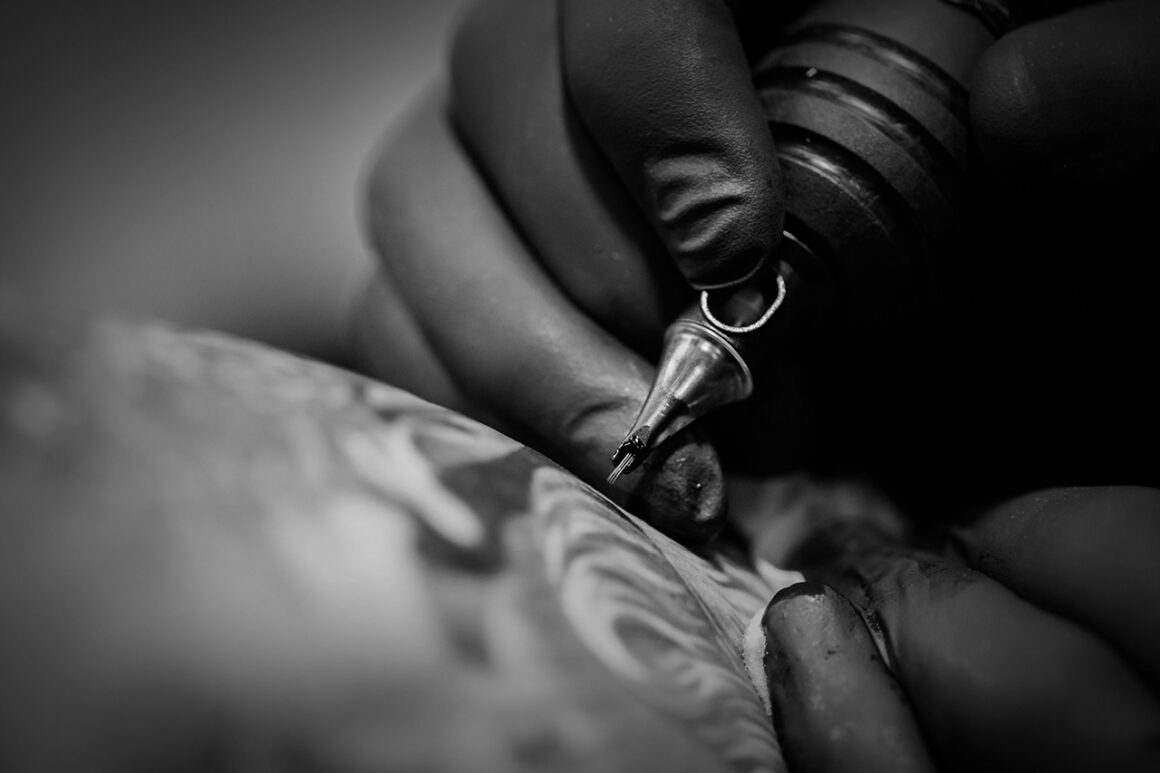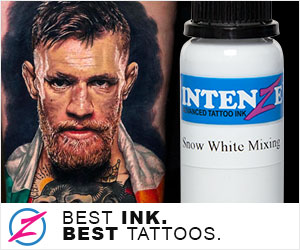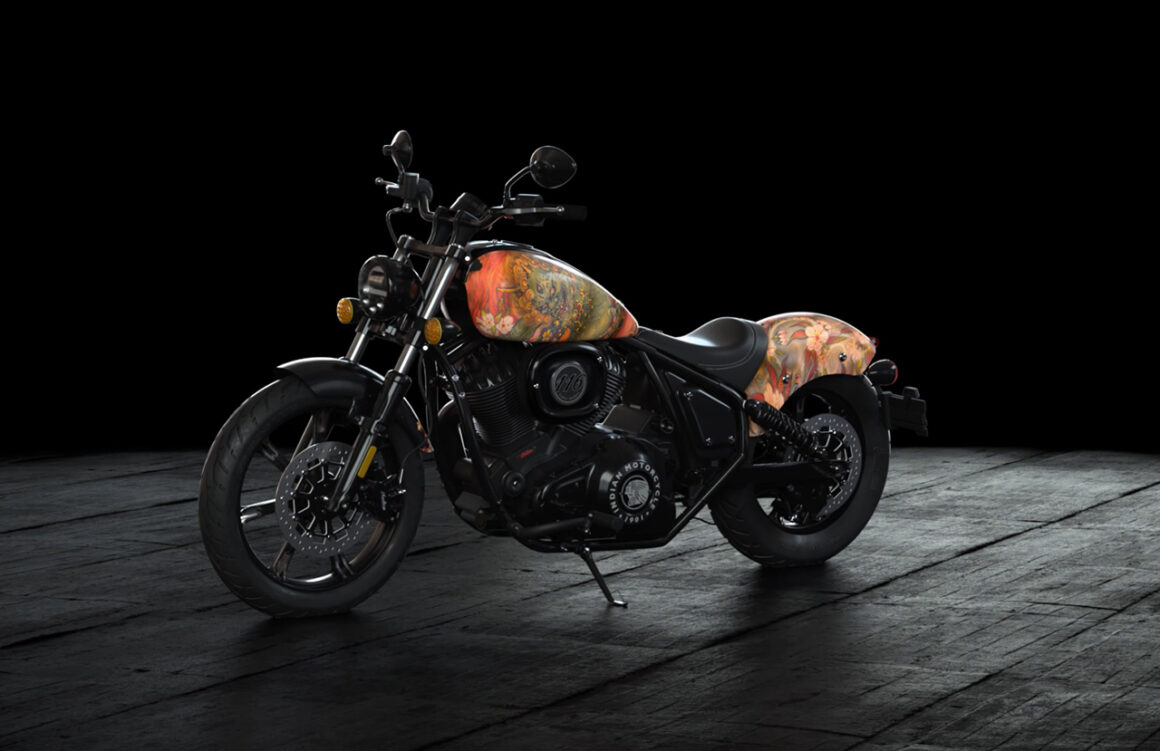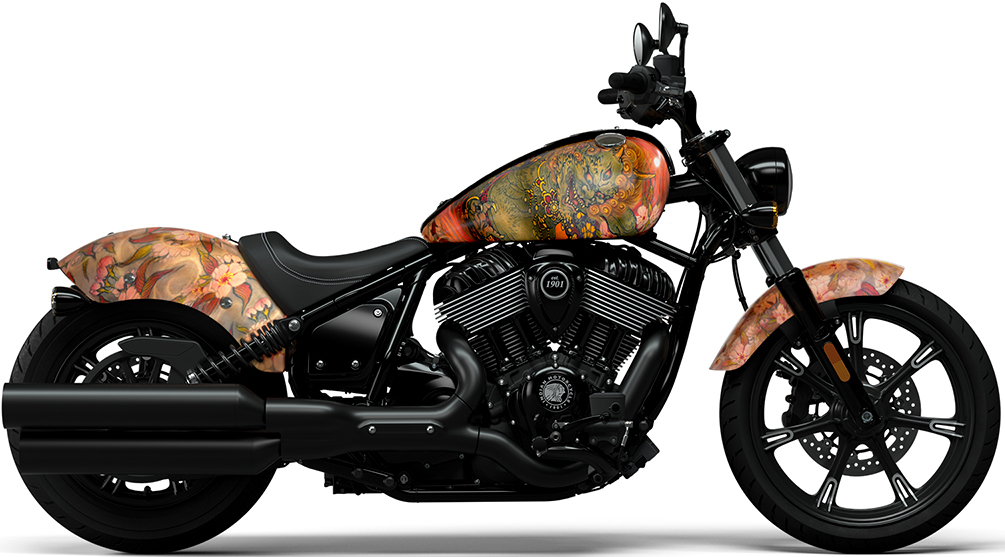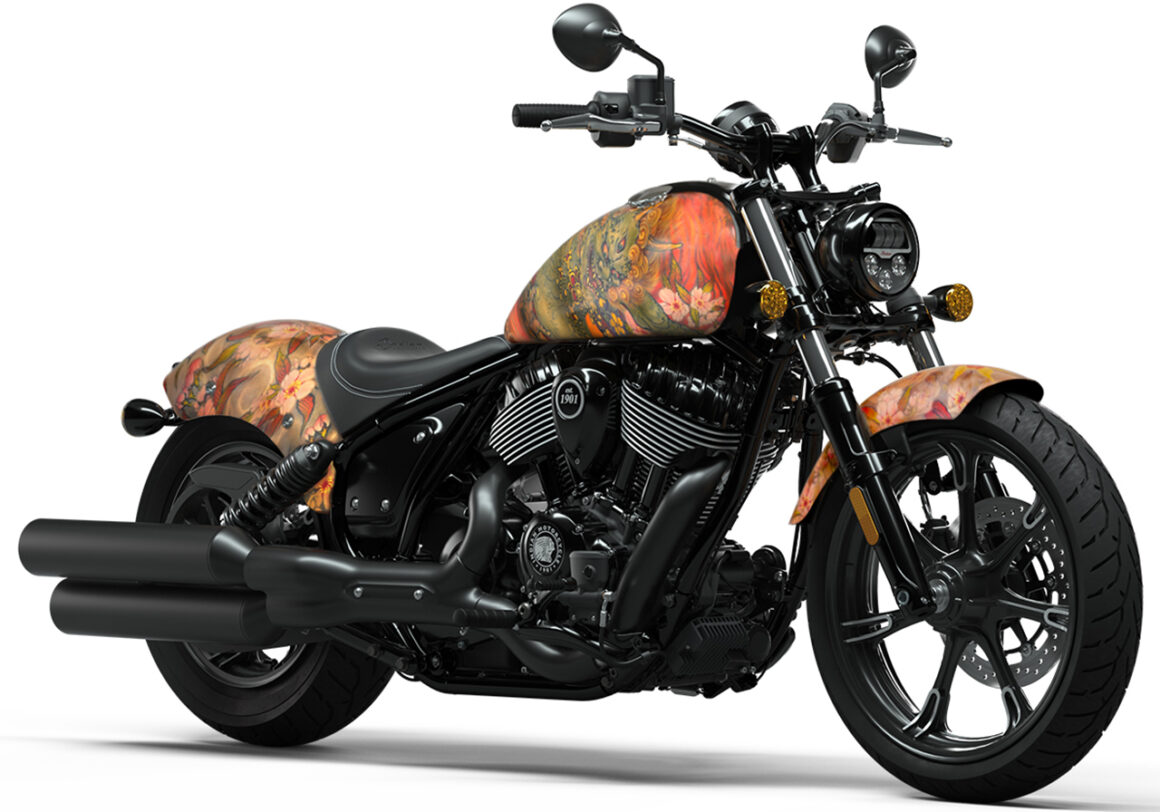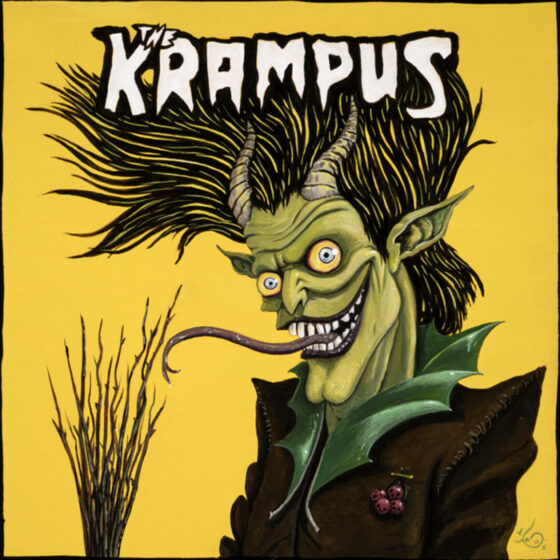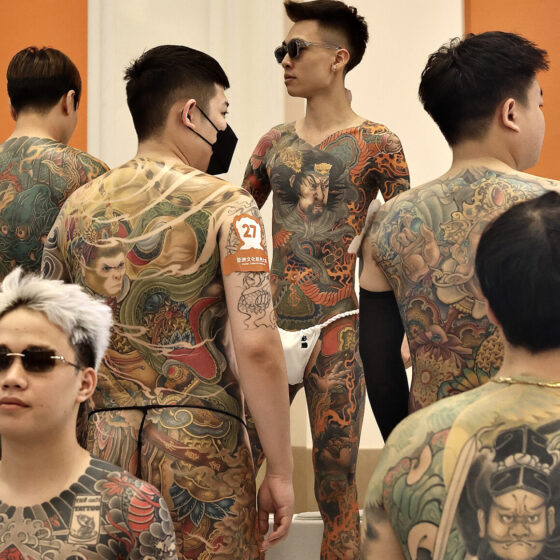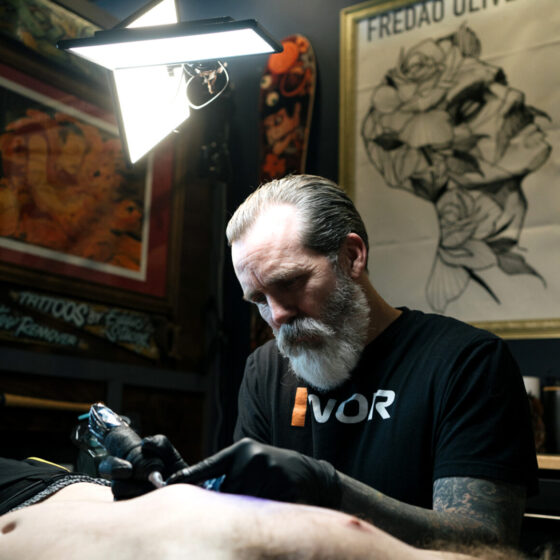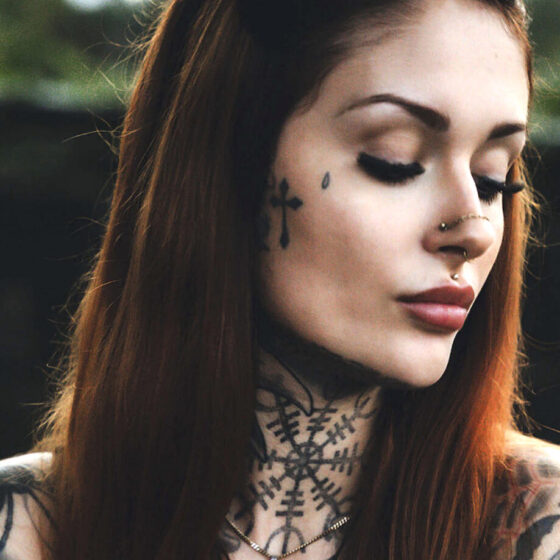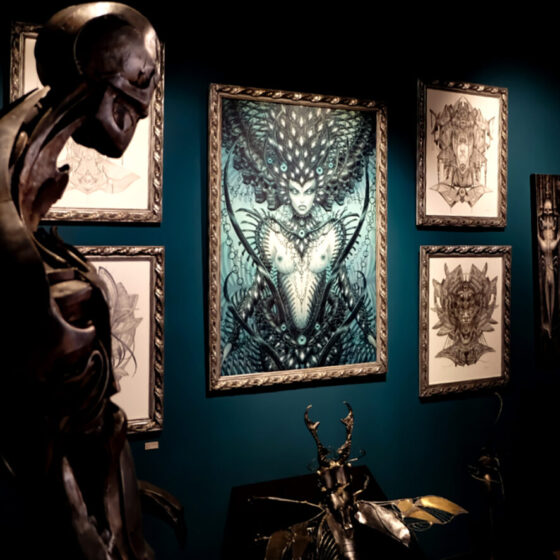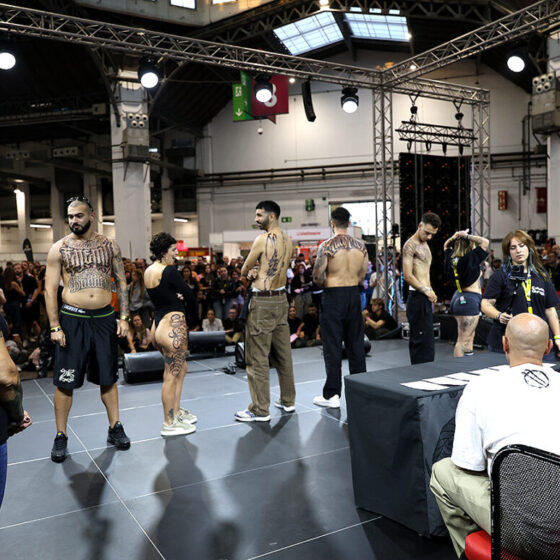Hailing from Yokohama, Japan, Shige practices the art of tattooing from his private studio ‘Yellow Blaze’. Here, Shige has refined his style over the past 24 years, interpreting traditional Japanese themed body art with his own unique twist.
Shige perfected his highly technical artistic skills in the mid-nineties while working as a motorcycle mechanic by day and tattooing at night. That passion for American motorcycles has translated into his choice of design for the Indian Motorcycle Chief. A mesmerizing mix of the Oni-Demon and cherry blossoms.
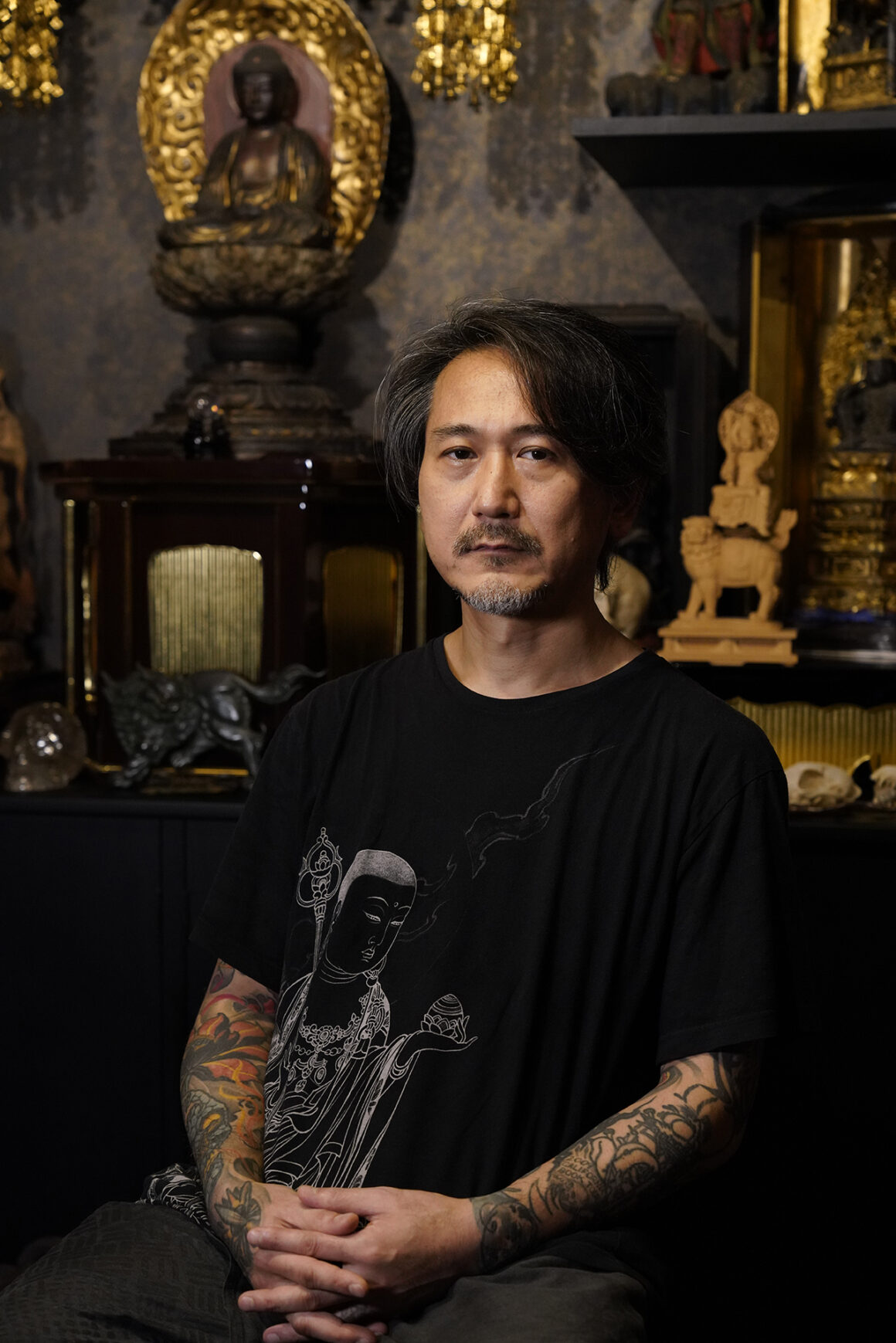
Could you tell us who you are and a little bit about yourself please?
My name is Shige, a tattoo artist in Yokohama, Japan. For 24 years, my tattoo studio is called “Yellow Blaze”. My style is based on traditional Japanese subjects but with my own style. I’m trying to create a new world of tattoos.
How did you get into tattooing and what motivated you to pursue a creative career like this?
I’ve always loved art, always been in that world. At first, I liked to work on motorcycles and machines, such as Harleys and Indians. I worked as a mechanic in Yokohama for 4-5 years. At the same time, I got into tattoos. I was a mechanic during the day and working as a tattooist at night. Tattoos and motorcycles seemed to be two sides of one coin. So, I was doing biker style tattoos at the beginning of my career.
What’s been the most interesting or challenging part of moving these artistic skills over to designing a bike for this project, and coming up with the concept of how to put your artwork onto the bike?
I guess I’ll have to wait and see. I’m looking forward to what kind of exciting thing’s going to happen. How will my tattoos design be transformed into motorbike design? I am excited about seeing the result. A tattoo is not just a flat piece of art. How to take a three-dimensional design and make it into a different three-dimensional object. I have no idea how the process will be at this point. I am just excited, full of expectation. I picked the “Oni demon with storm of falling cherry blossoms” design.
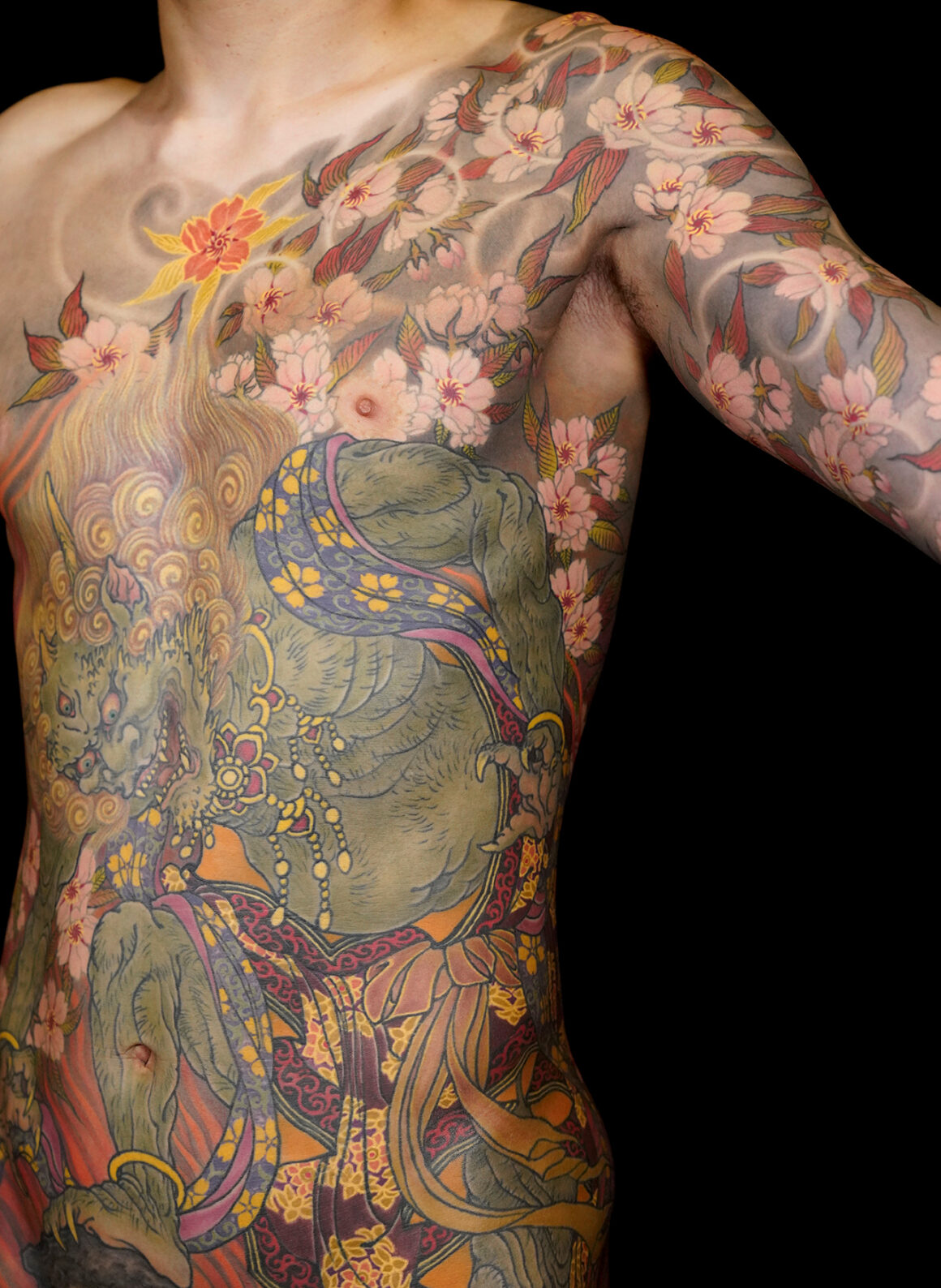
Can you talk a little about the design? Is there a story behind the design element by the customer?
I picked the “Oni demon with storm of falling cherry blossoms” design. My understanding of tattooing is different from what the majority thinks – understanding it mainly as decoration. The reason for the placement of the Oni-demon is: to show the importance of the belly. We sometimes say, we “open up stomach to each other, or “get angry from stomach”.
The Japanese language is full of mystery, and it is believed that the stomach contains the entire human heart.
Maybe you have heard of “Harakiri” by Samurai, a foreigner may think it is plainly suicide by cutting open your stomach. But for Japanese, this ceremony was only allowed for high-ranking Samurai. A noble ritual, filled with pride. The stomach means a lot to the Japanese.
Therefore, having an Oni-demon tattooed on the belly means you have Oni-demon in the center of the body and heart. Oni-demon stands for strong will and protection. Oni is a demon, but its meaning is not just evil. It also wards off bad luck and protects you from evil. Having an Oni-demon tattoo on the belly shows one’s determination to live in this harsh world with a strong heart that never forgets the original intention. I have talked to the client in depth about the meaning. It is the most important part of the tattoo. Of course, I pursued aesthetic beauty, too.
That’s how the Oni-demon was born. Talking about the storm of falling cherry blossoms: A tattoo has to be beautiful as the body moves. The cherry blossoms as such have to be perfectly composed on the client’s arm. But they are there to balance the Oni-demon, together with the deep meaning of the flower. Cherry Blossoms means “the pathos of things”.
This image of “a sensitivity to ephemera” can also be related to a motorbike – or even one’s life.
That’s the reason why I chose this image. Showing the motorbike and the dramatic depth of life itself. It is not just about looks. I desire to put emotional drama into the design of this motorbike. And the Oni-demon does create this drama.
I’m interested after hearing what you said in what kind of level of the concept did the customer come with and how much more did you elaborate on the customers idea!
All cases are different! In general, it is important that clients have a wish for what they want on their own body. However, you can’t choose from what you don’t know. I have studied 24 years to share my knowledge and use it to help them finding out. I take the entire day for consultation, to get to know the person, to ask them why they want a tattoo, and what kind of person they would like to be. After a long deep conversation, I make a suggestion. “How about this subject?” “How about this theme?” The client doesn’t have to come to me with a finished idea. The tattoo is going to be your partner that you live together with. Take time to think about it. If you are not able to decide for yourself, I ask you about placement, size and direction. Whether you want an image of strength or kindness or looking to tell a story…Often, I ask for a rough direction and then put in my own creation as the main theme.
So moving away from the tattoo, how do you feel about your design going onto such an iconic bike as the “Indian Chief”, especially with the period of history 100 years on from the original?
Simply surprised and honored! It’s the bike of everybody’s dreams. I’m sincerely honored to have been approached by such a brand.
On this project, all the profits from the raffle will be going to Mastectomy Tattooing alliance (MTA) to help fund Mastectomy tattoos for breast cancer survivors. Is this something that’s close to your heart, or is this something that’s affected someone in your life?
No one around me personally. But it has always been at the back of my mind. Recently a health insurance in Singapore contacted me regarding reconstruction after mastectomy or tattooing a new design after mastectomy, to help the patient mentally. The insurance company would provide coverage and one patient wanted to get tattooed by me. I found it a great opportunity. But it hasn’t worked out yet due to the global situation at the time.
And when I heard about this charity project, I felt empathy. It made me feel even more honored to take part in this project.
It’s wonderful. I often think tattooing is like a Japanese sword. It’s an art form. But the emotions of the one who tattoos and the one that gets the tattoo must match properly. Otherwise, there is always the possibility to hurt someone’s heart. Unfortunately, I have witnessed this before. A tattoo has to make people happy. Or simply joy. Tattoos – as decoration – and “Irezumi” tattoo are two different things. I often think that a tattoo is like a Japanese Sword. The technology and quality of Japanese swords are unparalleled in the world. As a work of art, it’s very sublime. It’s splendid but it’s used as a weapon. It can kill people. At the same time, the Japanese have treated it as if it were a god. A tattoo also contains these two sides.
Depending on how you treat it, there could be a negative effect on people. It’s all about how you use it. When the motivation of the tattoo artist and the motivation of the client come together, the power of the tattoo will be enormous. I would like people to be happy. Of course I am happy when my client is happy through my tattoo.
But this is the combination of bike, charity, and tattoos, which can help women who suffer.
This is such a great project. Also, it means a lot that tattoo artists are chosen to take part in the project. I have the pleasure of contributing to the tattoo industry. There’s a lot of talent in this industry. I think this is a very meaningful project for me and for the industry.
How does it feel now tattooing has become legal in Japan, and has it changed anything over there since it’s happened?
Nothing has changed for me personally. I’m very grateful it’s been confirmed that we are not criminals. I would be happy if I could contribute to the positive development of this industry in some small way. We still have to work a little harder.
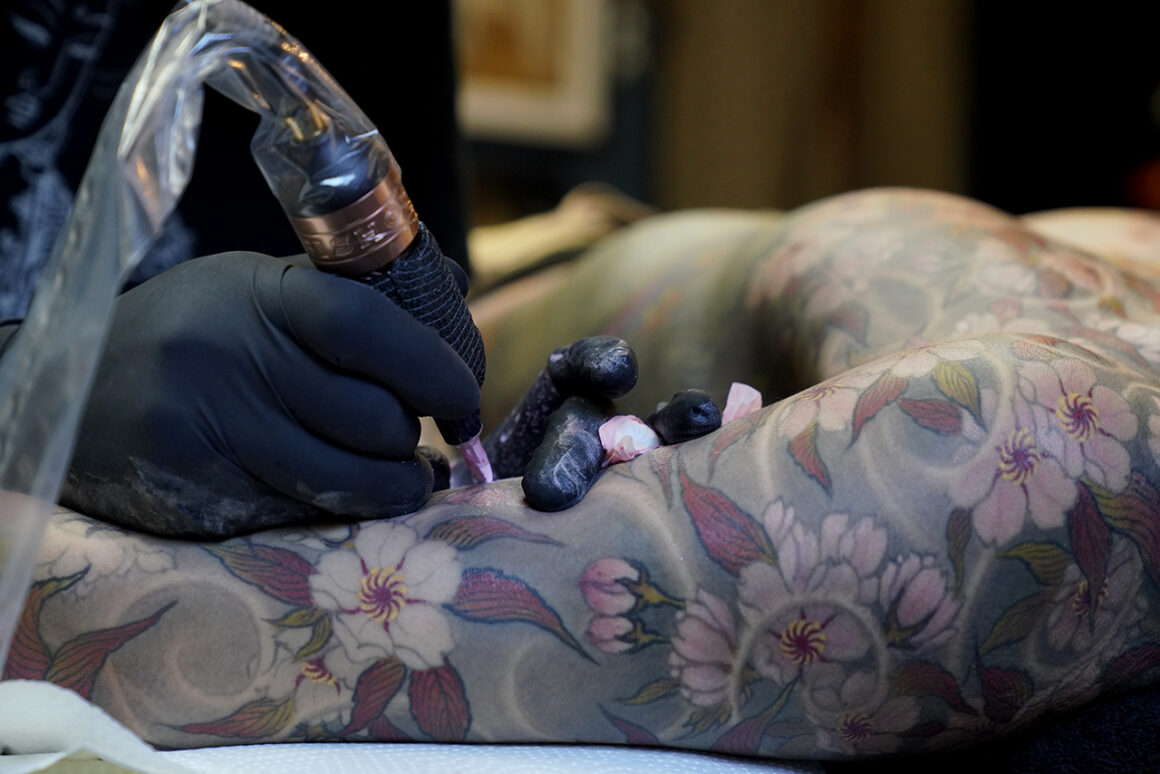
What do you think about more of the bigger brands inviting tattoo artists into the creative design process of their products, and have you ever worked with any other kind of brands in a similar way before?
I feel the times are changing, first and foremost it was impossible to imagine this 20 years ago. This tattoo world is full of talented people. I think you’ve really hit on a very good point. I’m hopeful that we’ll be able to do something new. No. Not like this. My first experience.
The bike is going to be raffled so I just wanted to ask why people should buy tickets for your bike?
Needless to say, it’s for happiness. Yes, indeed. It’s something we can all buy and have fun with. Lottery, right? If you don’t win, you’re still contributing to the cause. No one loses anything. So please, everyone, keep buying! – www.nrstudios.co.uk/indian-motorcycle-shige/
Do you think it’s a good idea to invite Ola Stenegard (designer of the Indian Chief) on the judging panel for next April’s event in London to judge the tattoo artists bike competition?
Oh, that’s a great idea.
Ola Stenegard also present at the interview then asked Shige some questions of his own.
He stated: “I’m very fascinated with the Japanese culture. I got to know it through custom bikes, but as I got to know more of it and started to understand more of it, I think it’s really fascinating to see how Japanese custom bike building as well as the art of Japanese tattoo is so well respected and deeply admired around the World. I see a lot of parallels the more I got to know the culture.
I see a lot of parallels in the thinking or how you approach these two different creative fields of craftsmanship let’s say.
I also see parallels from everything from Japanese joinery and Japanese blacksmithing. I apologise for my pronunciation but, wood joinery is super fascinating, the attention to detail, Kamuci is very interesting to follow. I see the same with Japanese blacksmithing in the making of swords but there seems to be so many parallels and I see this between custom bike building and the art of Japanese tattoo as well.”
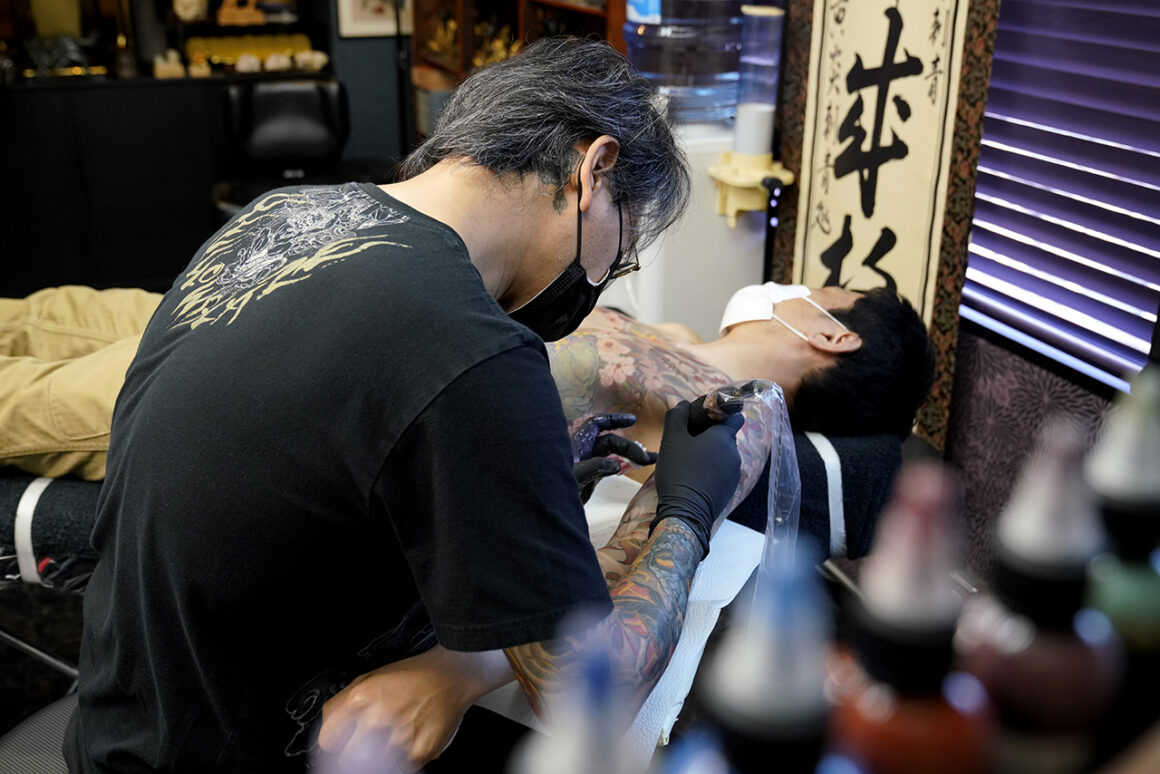
I’m really curious to hear your thoughts on this. Where does this come from? What is it in Japanese culture that makes Japanese craftsman second to none in the world?
It’s in the DNA of the Japanese people, and it’s a mentality that can be linked to Bushido, a spirit that filled all Japanese before. With the later changes in education, it seems that today’s youth don’t have it. In general Japanese are serious about things. Artisans do not multitask.
They keep doing one single process to perfection. That’s what we are good at.
Why, Japan? I think that’s what you feel when you learn about Japanese culture. I myself was born and work in Japan today. But think about 400 years ago, how painters at this time lived through the “Warring States period”? We learn from history. Not only in Japan. Europeans may have different temperaments, but of course we are all the same. The contemporary background of the time is the key. For example, during the renaissance, the world was in such a state of flux that people were investing their money in fine arts, and the renaissance art blossomed. During Edo era (1600 – 1868), Japan was able to develop its own culture without being swallowed up by the rough seas of the Age of Discovery. And we are still profiting from this inheritance. Today’s Japanese culture is based on this history. I think Japan’s culture of craftsmanship and manufacturing has a stable grounding.
Ola Stenegard then went on to say: “I still think Japanese is absolutely amazing. The Japanese craftsmanship. I don’t think we’re even close in Europe! In my biker times, which was quite a long time ago, I used to read all the bike magazines and the best custom built at this time came from Sweden. We, the German bikers were wondering why do the Swedish guys build such great bikes. And one reason was strict authorities in Scandinavia I think. And the other reason we said is the weather is so bad…. more time to build rather than to ride!
I remember we also thought we were quite good custom bike builders, until we got our hands on the first bikes magazine in the early 90’s, then we realized there was a whole other world that was second to none. We were just blown away by it all. It’s just amazing to learn more about it. The more I learn about the craftsmanship and the culture the more fascinated I become, the more I admire it and advocate respect for the culture of craftsmanship. So, it’s been fantastic to hear the answers from Shige, and thank you so much. Japanese are very good at incorporating and changing things. Japanese add their own culture on top of outside influence.
By adding Japanese culture to Western culture, we create something different and new.”
{Ola Stenegard} I first came in contact with Japanese custom bike culture back in the 90’s through bikes magazine and the more I learned about the Japanese culture, I started seeing parallels. Everything from custom bikes to Japanese art of tattooing. Through vasumi to Japanese blacksmithing, nyonto, Japanese wood joinery, Kamici, I apologise for my bad pronunciation, but I became very deeply fascinated by this. I see a lot of parallels and I’m curious to hear your thoughts on where this comes from? How do you Shige see these parallels of different craftsmanship?
There are a lot of reasons behind it. Manufacturing is at the core of Japan’s industry. If I may add another aspect: We have a different sense of religion. Both Shintoism and Buddhism greatly influenced us. Why do we work hard? You need to understand “bushido”. Hard to put into words. We are constantly challenging ourselves. Being a craftsman is a battle against yourself. There’s a link between craftsman and artists, and there’s a difference. I feel more like a craftsman when I create. Monks go to temples to train. Constantly training, they are not taking a lazy nap. They have an idea to define a theme for themselves and then overcome it by their own will. There is this concept to begin with: The idea of daily training is deeply rooted in our mind. I’m glad to hear that you appreciate the high level of craftsmanship and I think these are the reasons. No Pain, no gain.
